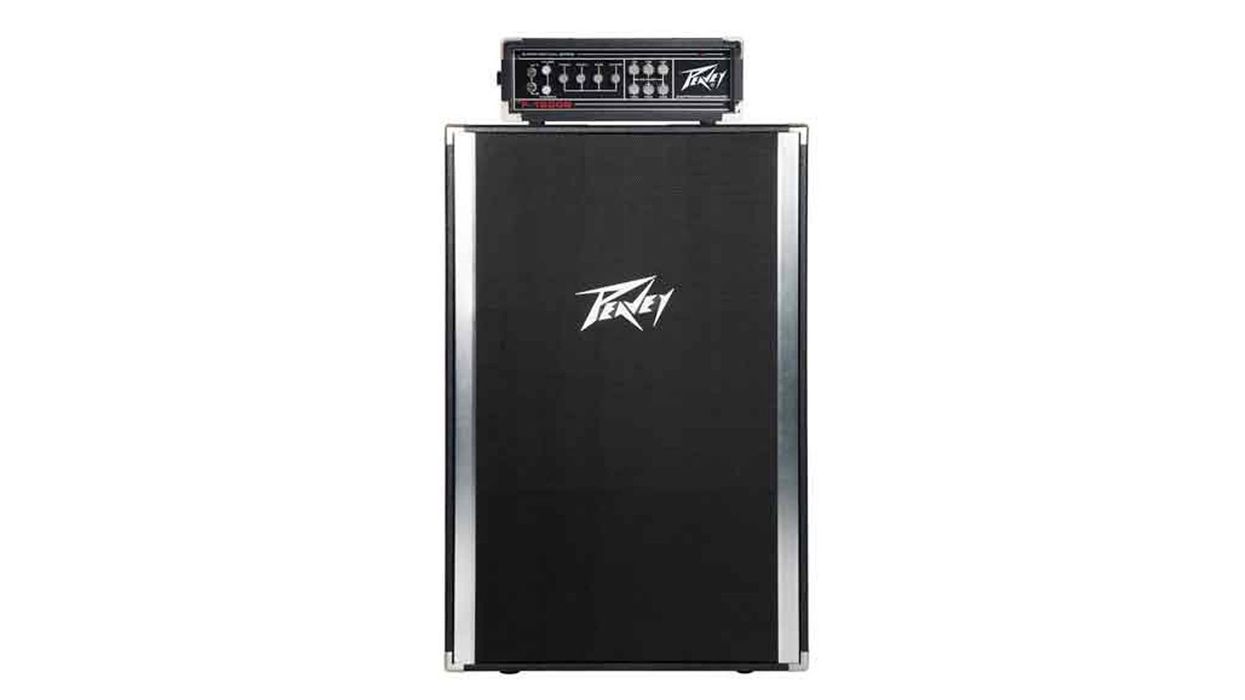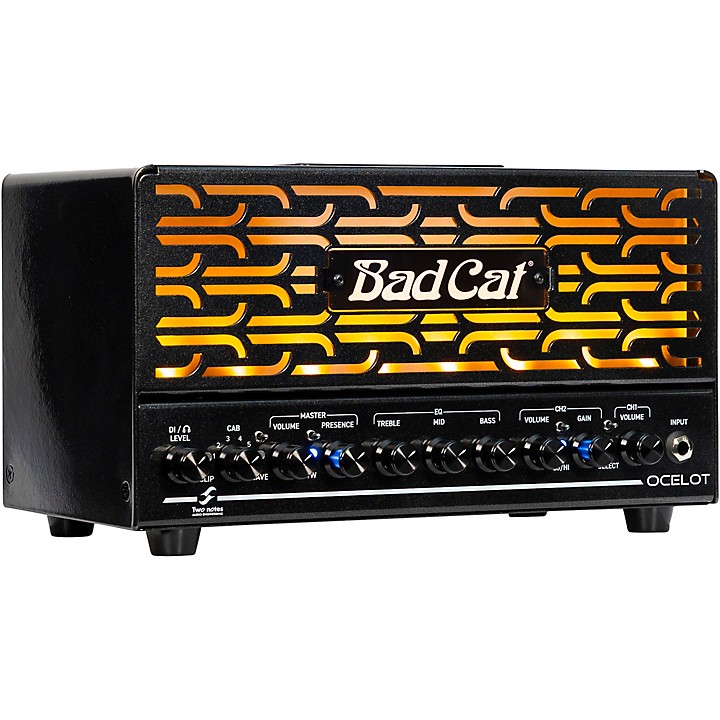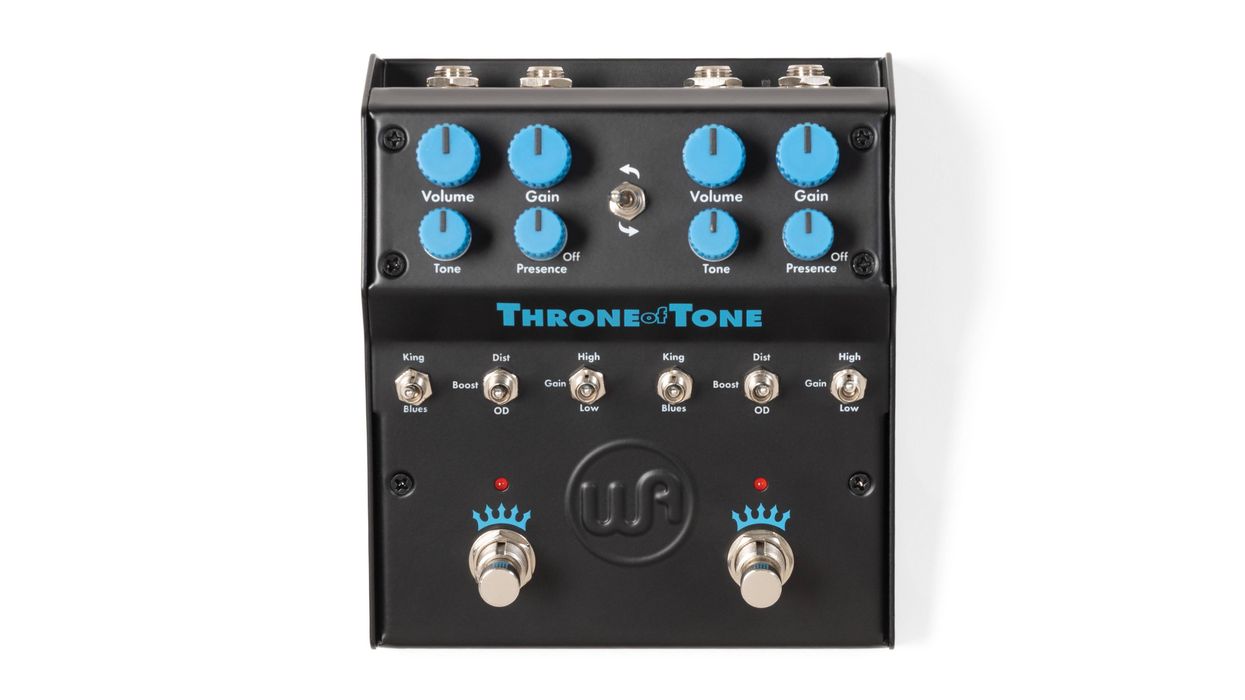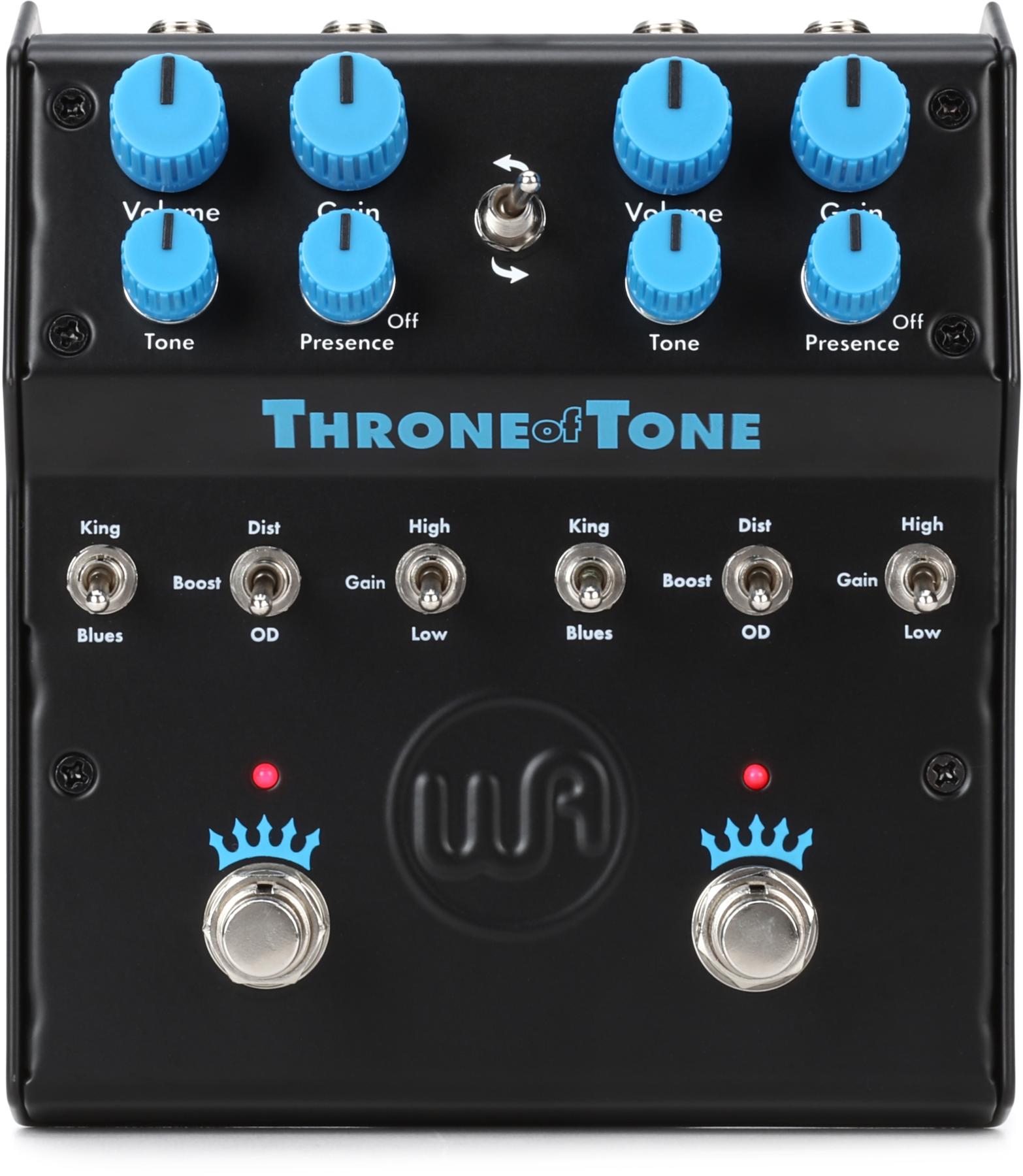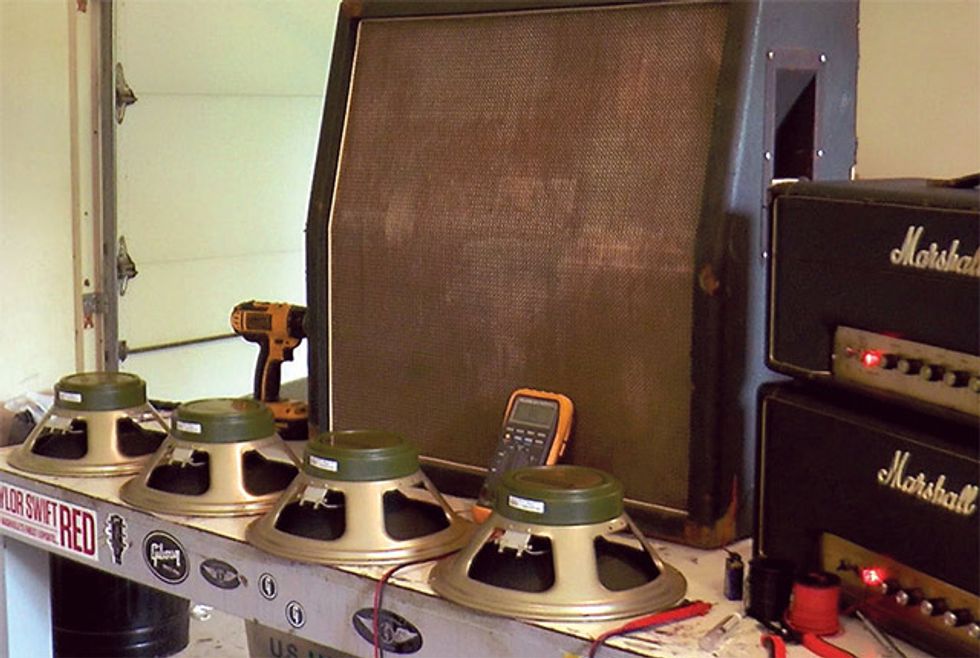
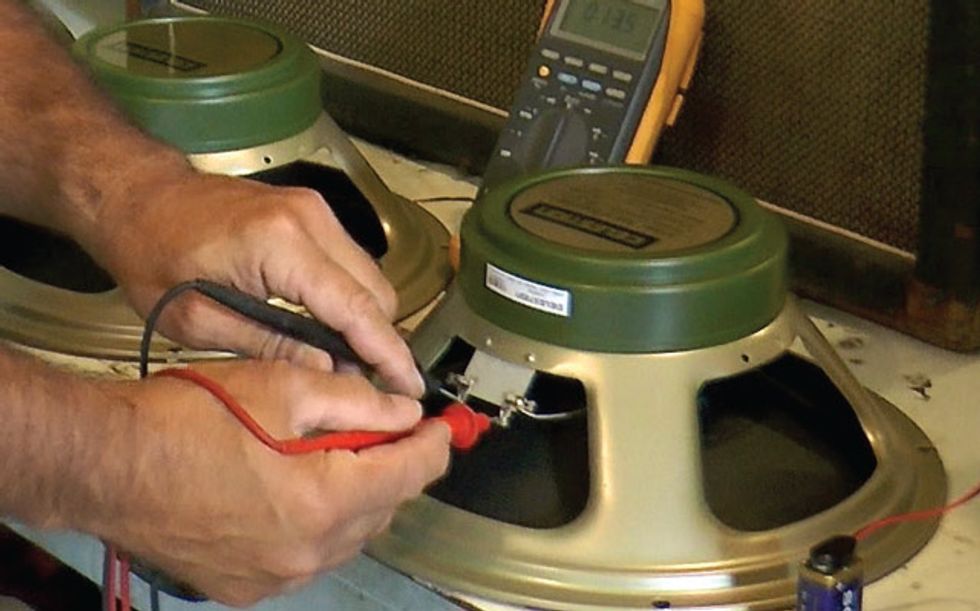
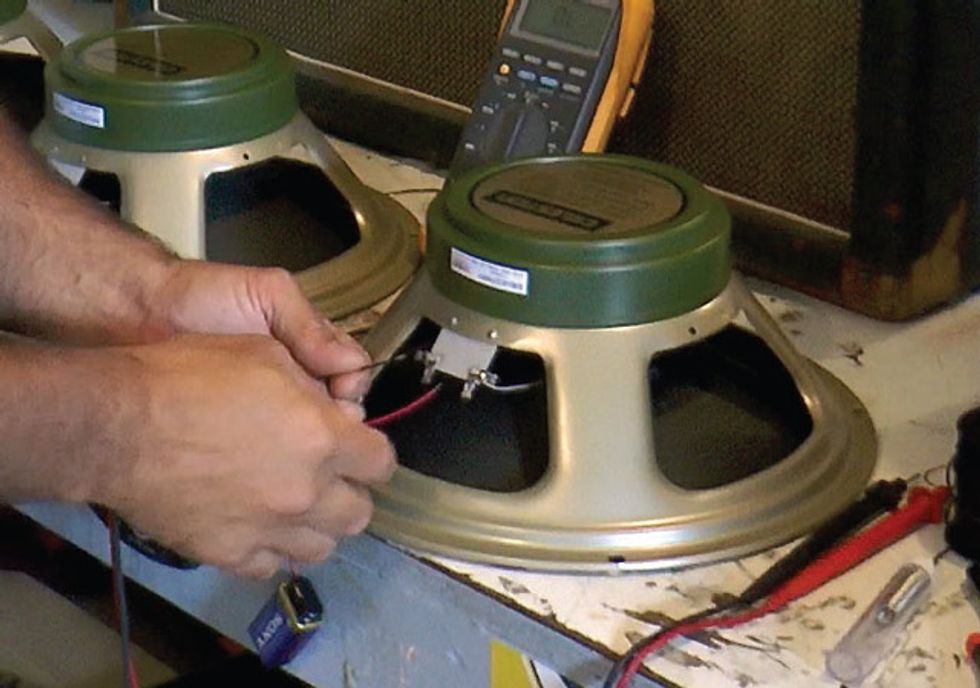
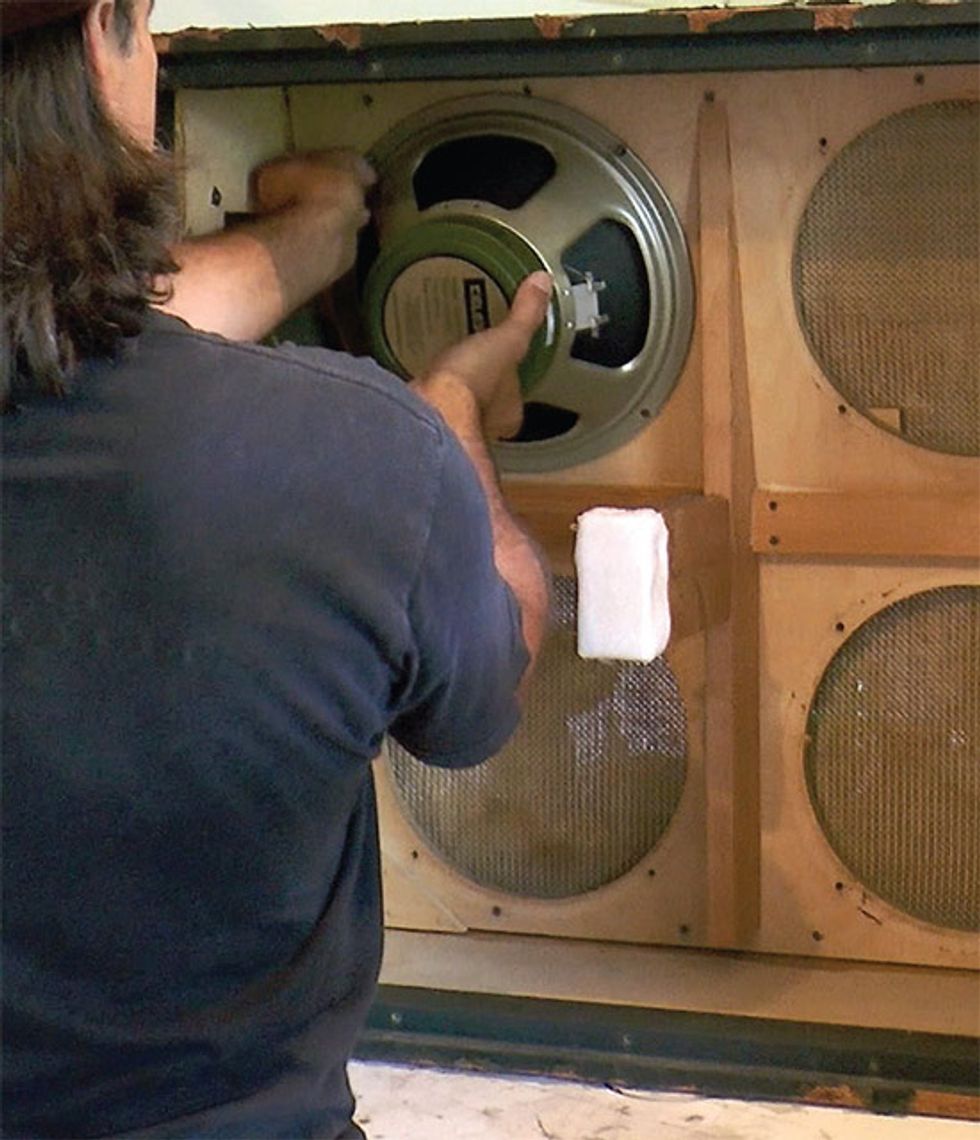
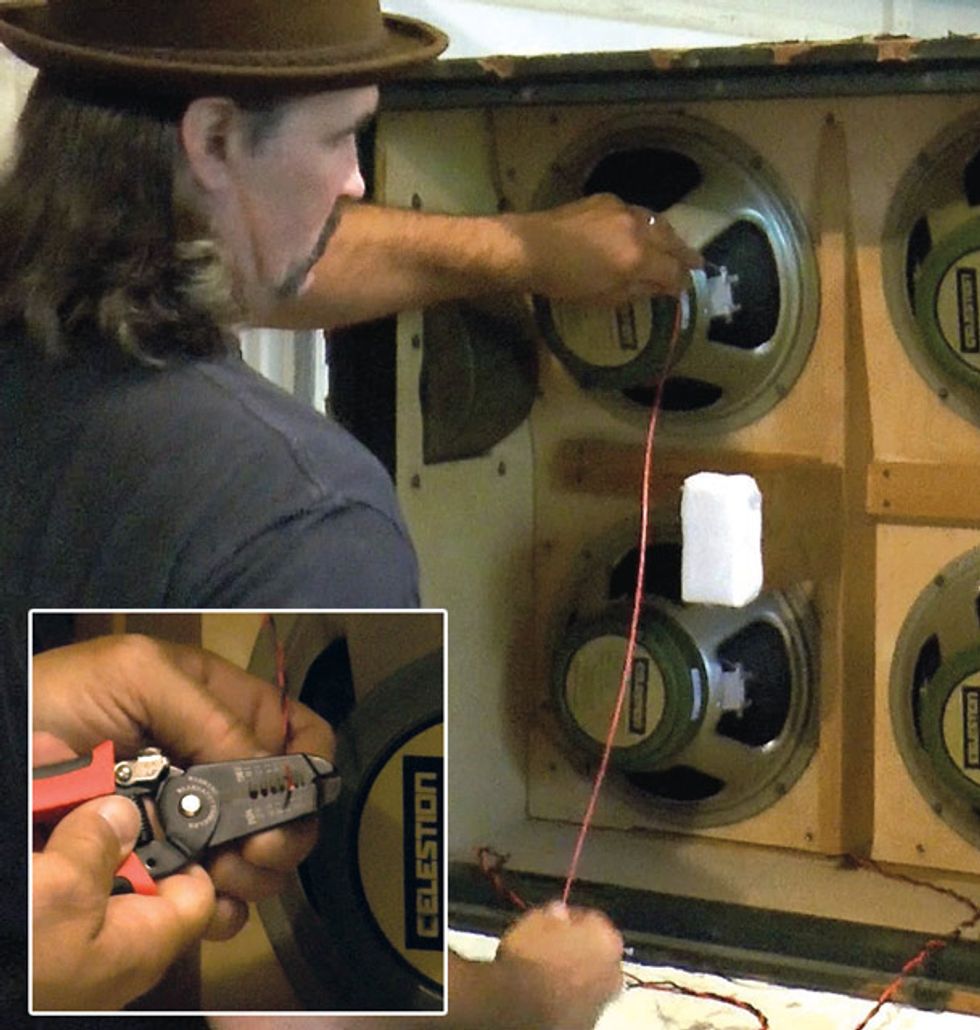
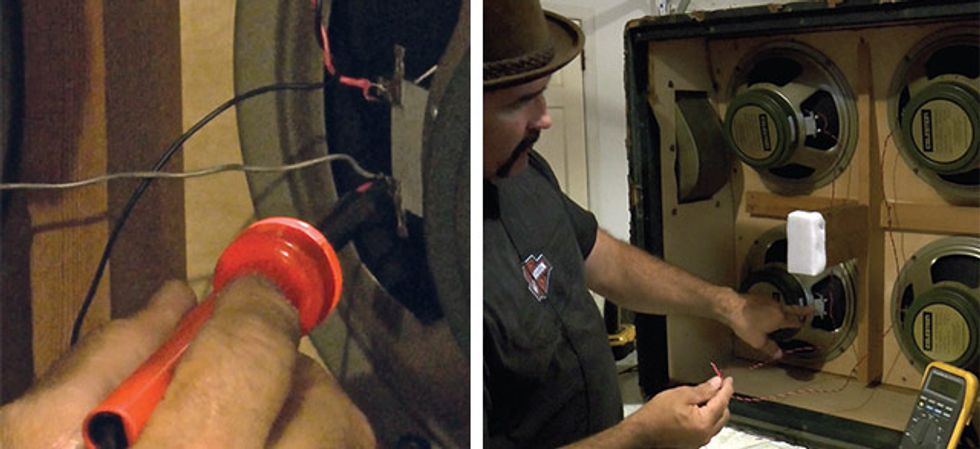
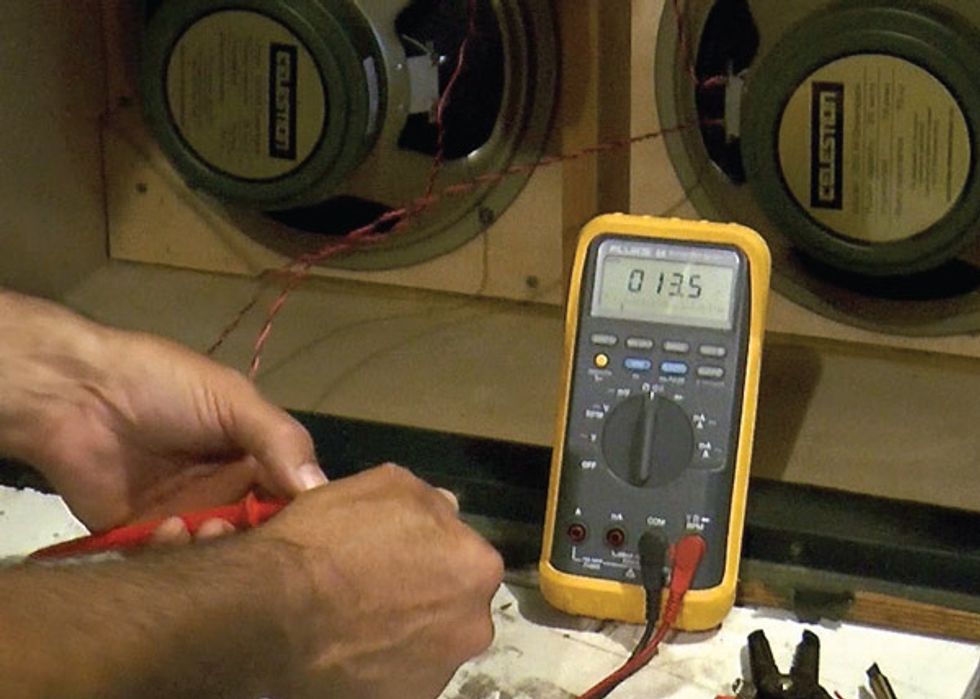
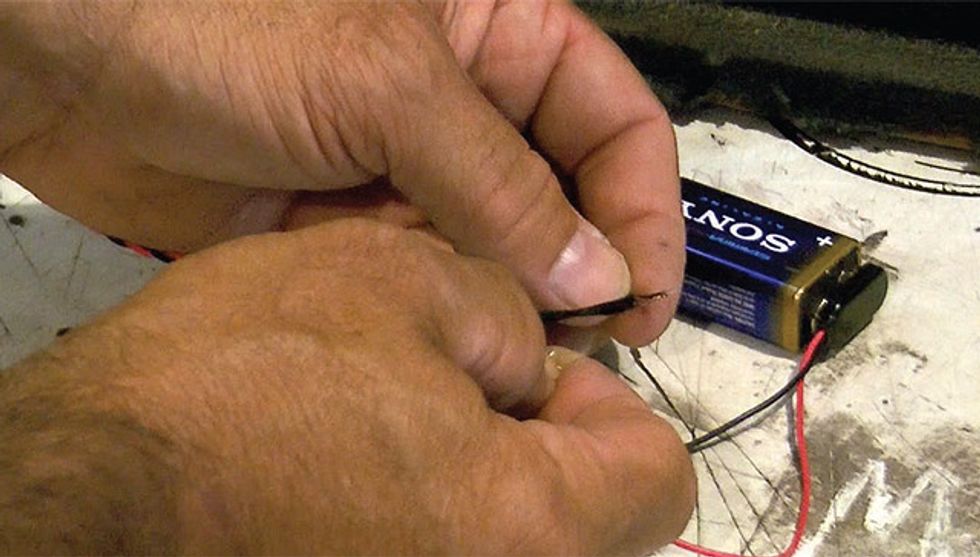
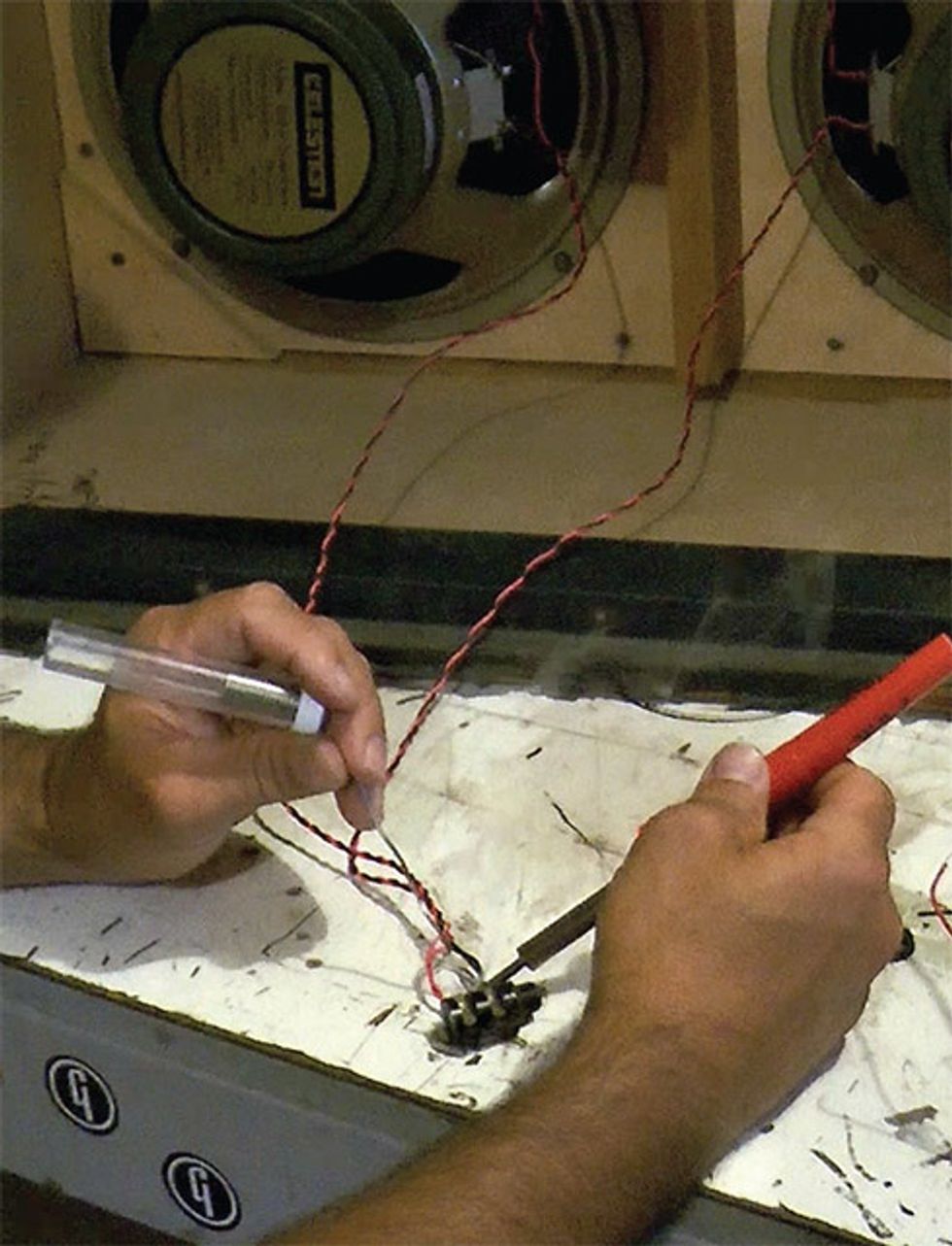
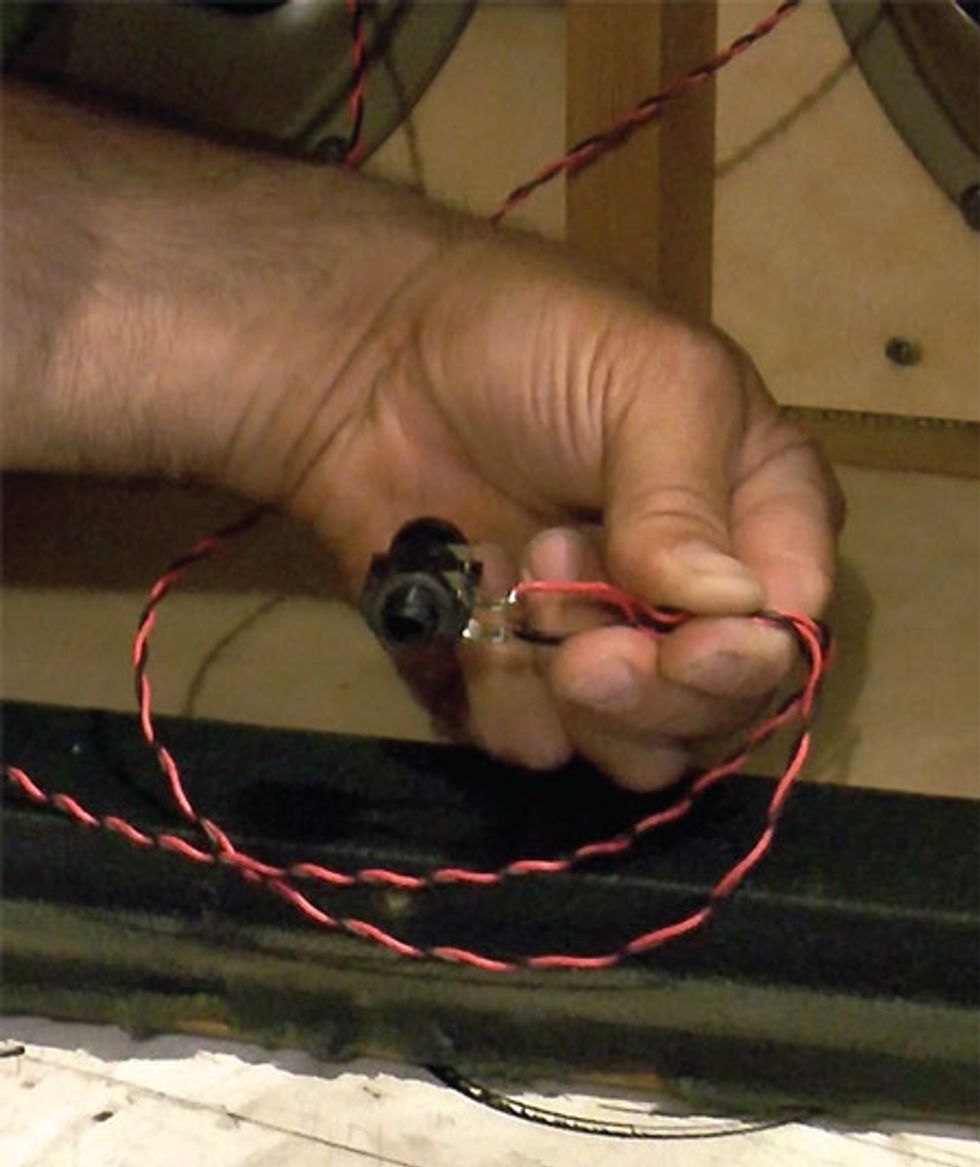
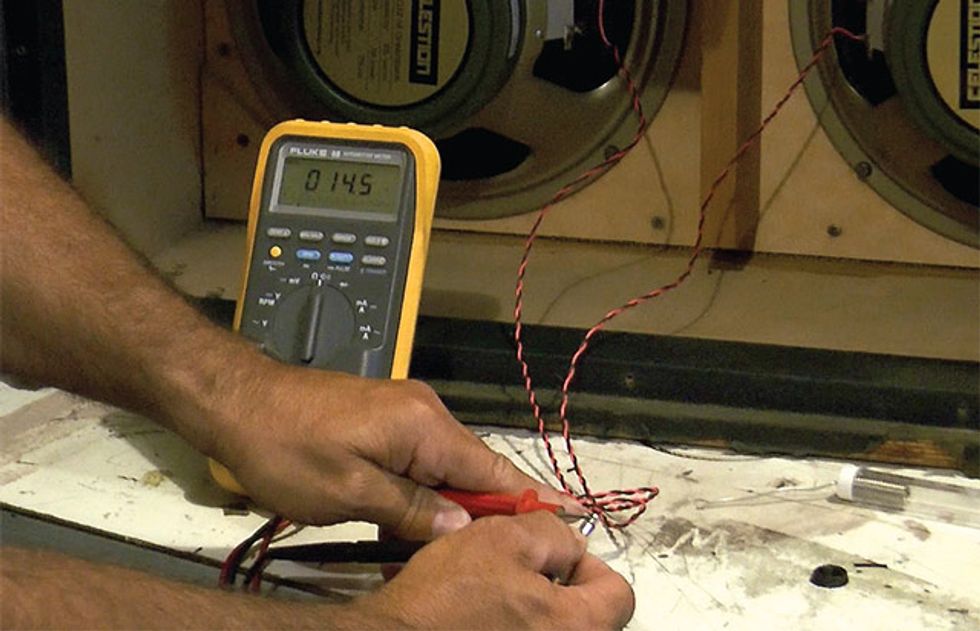
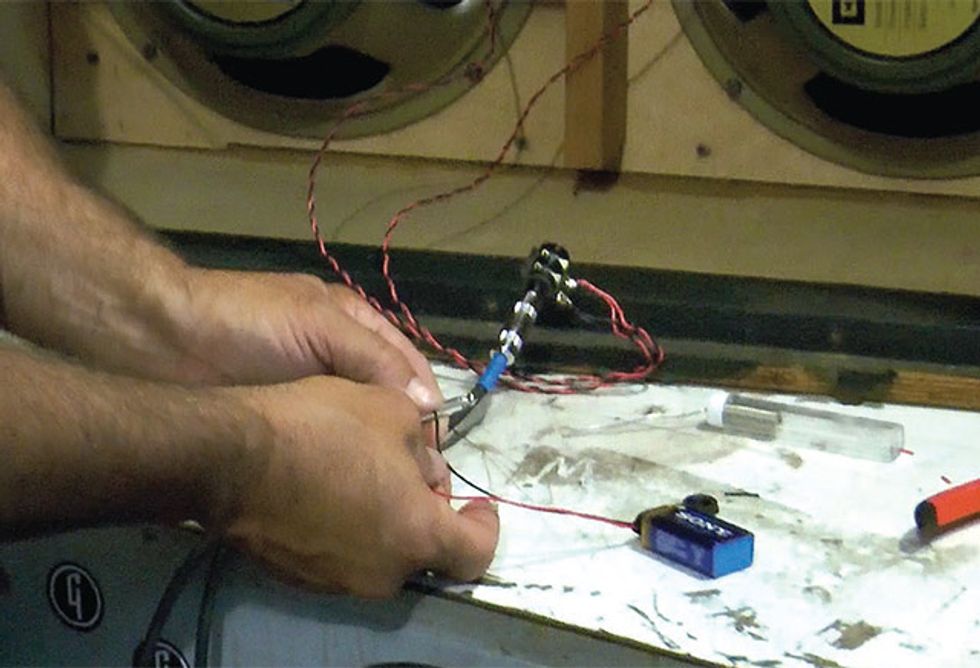
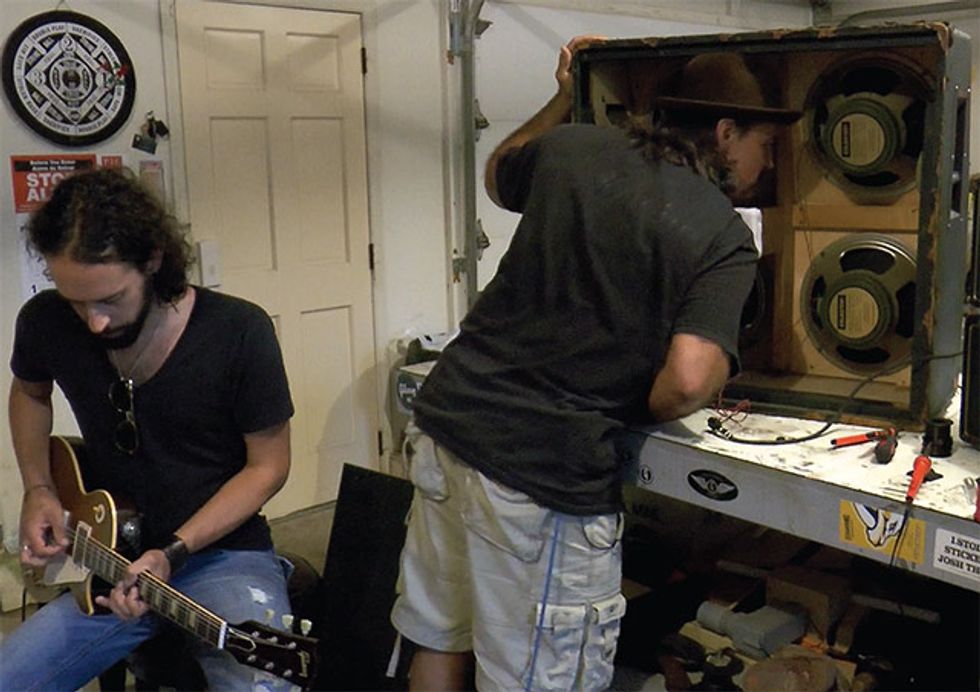
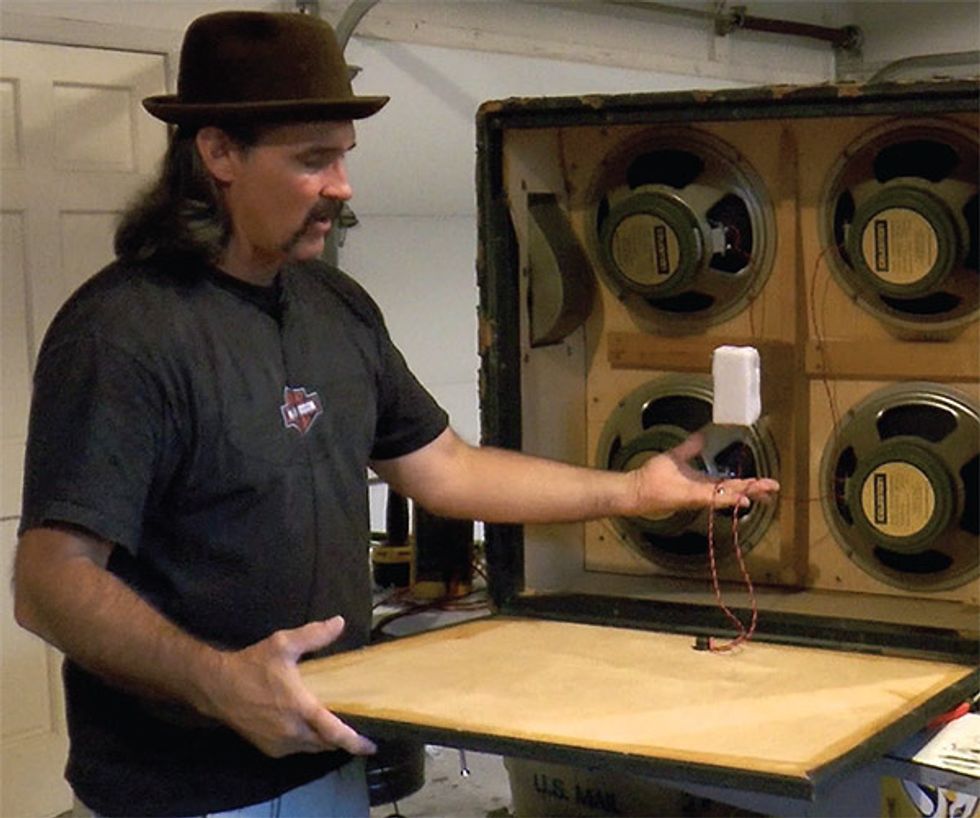
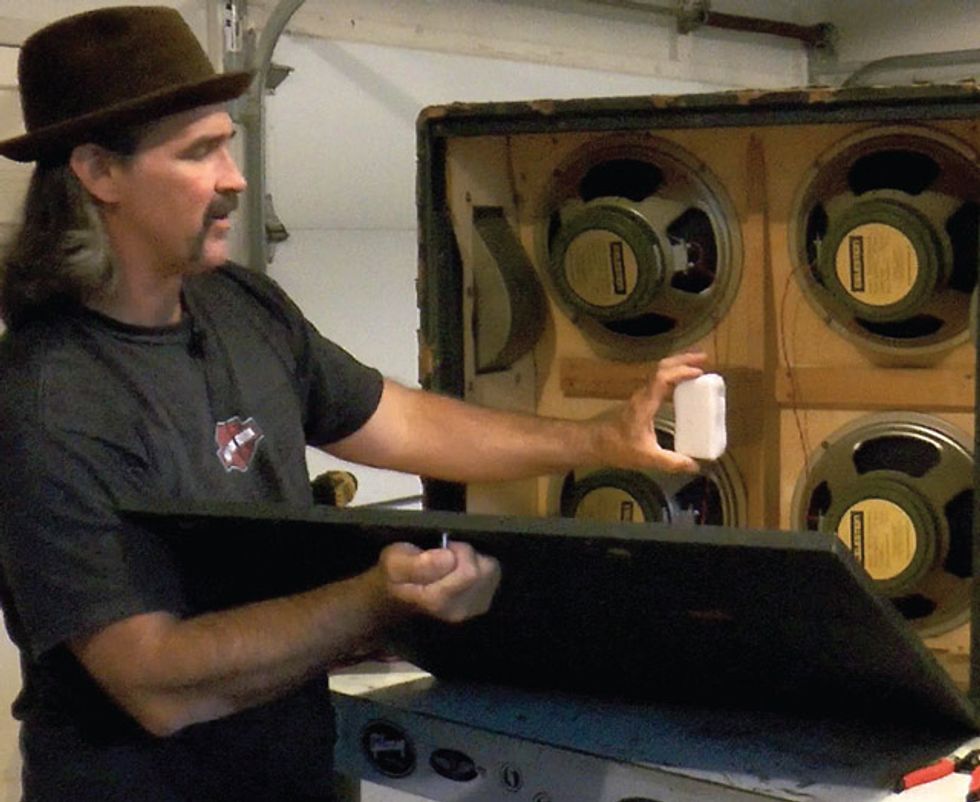
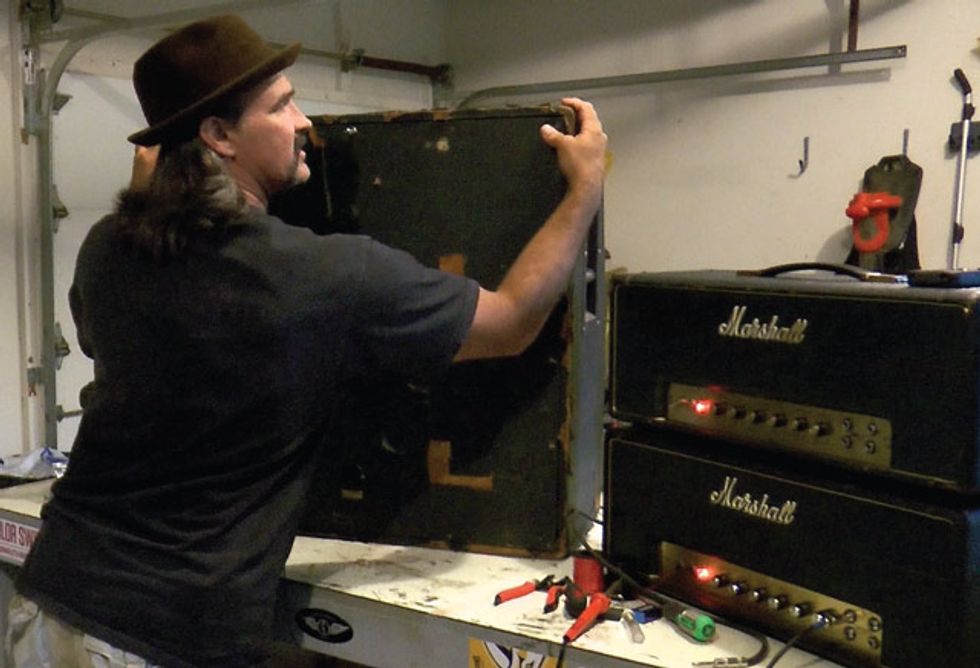
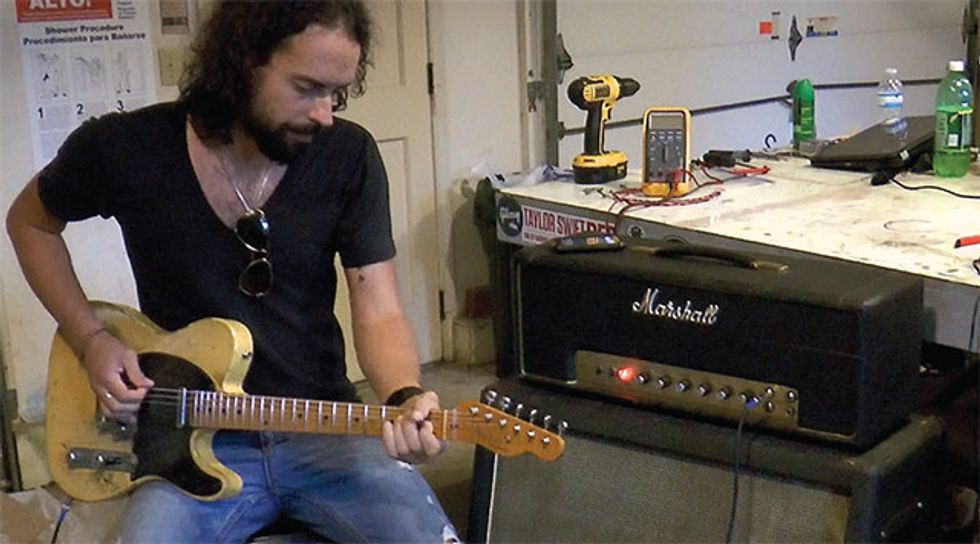
 Tools Needed
Tools Needed• Voltmeter
• Soldering iron and solder (preferably 60/40)
• Wire stripper
• 22 AWG multi-strand wire
• 9V battery with power lead
• Phillips screwdriver
• power drill with Phillips head
Click here to watch our 2-part video tutorial on replacing your amp speakers.
Analyzing every aspect of your signal chain is a common pastime of many tone-hungry guitarists. From strings and picks to pickups and stompboxes, we swap elements in and out of our rigs, guitars, and/or signal chains, hoping for some magical new combination. At the very end of the line, however, is a component that guitarists and bassists often overlook as a means of improving or altering tone—speakers. And the fact that speakers are swapped out far less than pickups, pedals, and complete amps is rather odd, considering that the speaker is the final component that physically creates our tone. Here we aim to help change that.
Perhaps one of the reasons we don’t change speakers as much as other stuff is that some of the related technical specs can be confusing—and either dangerous or damaging to our gear if we don’t get them right. Depending on the number of speakers and intended use, speaker swapping can require an understanding of phasing and impedance, as well as the relationship between series and parallel wiring. But these concepts really aren’t so complicated that they should deter us from fine-tuning the tones coming out of those paper cones.
For this demonstration, we’re installing a quartet of 25-watt, 16 Ω Celestion G12M Greenback speakers in a vintage 1968 Marshall basketweave cabinet, which we’ll configure for a 16 Ω impedance using series/parallel wiring. (To view the wiring diagram for this project, visit premierguitar.com/4x12-wiring.) We’ve chosen a 4x12 cab because it offers the most complex example of speaker replacement. For example, re-outfitting a half-stack requires dealing with impedance and matching phase, as well as exploring the classic Marshall series/parallel wiring. (In smaller projects—say, 1x12 combo—all you need to worry about is getting a speaker with the right impedance/ohm rating and connecting the wire leads in the correct polarity.) All right—let’s get to it!






![Rig Rundown: Russian Circles’ Mike Sullivan [2025]](https://www.premierguitar.com/media-library/youtube.jpg?id=62303631&width=1245&height=700&quality=70&coordinates=0%2C0%2C0%2C0)







